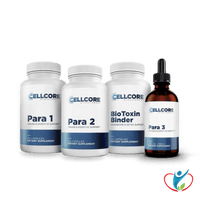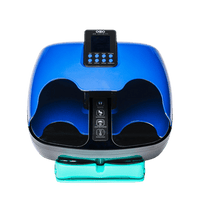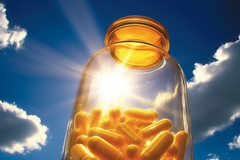Salmon is one of the most popular fish in the world, known for its delectable taste and its proven health benefits. Every year consumers in the U.S. eat about 400,000 tons of salmon. The demand for salmon is only increasing, and it’s the skyrocketing demand that puts intense strain on global supplies of wild salmon, which have been slashed in half during the last several decades.
Fish farming has picked up the slack, leading to the Atlantic salmon subspecies becoming the world’s most farmed fish. Important to know is that wild-caught and farmed salmon are quite different in several respects that directly affect the consumer.

What Fish Eat Matters
Much of the difference in the nutritional value of wild-caught salmon and farmed salmon comes from their radically different diets. Wild salmon eat a wide variety of smaller fish and crustaceans such as shrimp, as well as squid and krill. Their diet is loaded with omega 3’s and minerals from the hard bony skeletons of small fish and the chitinous exoskeletons of crustaceans.
In contrast, fish farmers use pellets made of ground-up genetically modified organism (GMO) corn, soybeans, and fishmeal to feed their salmon. It’s a high-protein, fat-rich diet that makes farmed salmon larger than their wild kindred. However, this doesn’t necessarily translate into a healthier food source for people to consume. Furthermore, given the confined quarters in which farmed fish are kept, they inevitably ingest their own waste, further detracting from any nutritional benefit they may provide.
Fat
Both wild-caught and farmed salmon are loaded with nutrients such as proteins, healthy fats, vitamins A and D, and minerals like calcium. Farmed salmon has three times the amount of saturated fat than wild salmon has, giving it a higher calorie count per ounce. A downfall is that farmed salmon is higher the more inflammatory omega-6 fatty acids than is wild salmon. Wild salmon have richer levels of the more anti-inflammatory omega-3 fatty acids than farmed salmon. The American Heart Association recommends two servings of fish like salmon a week, due to its plentiful fatty acids. Omega-3 fatty acids are highly beneficial to good health, particularly when it comes to reducing inflammation, the health of the cardiovascular system, and the proper functioning of the brain. So, a consumer will be better off choosing the healthier option, wild salmon.
Conclusion - wild salmon edges out farmed salmon with regard to fat given its healthier, anti-inflammatory characteristics.
Contaminants
The debate about which salmon is most free of contaminants has gone on for years. Even a cursory web search on the topic reveals terrifying allegations about farmed salmon. We know chemicals like PCBs and other persistent organic pollutants can be found in the oceans, but farmed salmon have been found to be more contaminated than wild-caught fish. That’s because wild salmon swim great distances and encounter different levels of pollution. Farmed fish are kept in comparatively small enclosures of a few acres, that concentrate unwanted chemicals, toxic waste and byproducts.
Yet several recent studies have shown contradictory findings, with wild-caught Atlantic salmon having higher levels of contaminants like dioxins, PCBs, and toxaphene. Levels of the toxic heavy metal mercury were also higher in wild salmon in these studies.
Conclusion - wild salmon consistently perform better than farmed salmon in most studies.
Coloration
The flesh of wild salmon is naturally red because of a pigment found in the many crustaceans that salmon eat. This pigment comes from the presence of the powerful antioxidant called astaxanthin and has many health benefits. The striking red color of wild salmon is associated with its high-quality. Farm-raised salmon meat is pale pink, sometimes even grey, because the fish’s diet lacks crustaceans, so fish producers add red coloring dye/pigment to the fish's food. If you’re looking to avoid artificial ingredients, wild-caught salmon is the way to go.
Antibiotics
Trace amounts of antibiotics have been found in wild-caught salmon, whereas higher amounts are found in farmed salmon due to farming practices and the need to kill unwanted bacteria and infections. While trace amounts aren’t necessarily harmful, there’s evidence that even small amounts of antibiotics accumulating in food may contribute to antibiotic-resistant pathogens and disrupt our gut flora.
Conclusion - if you’re concerned about exposure of antibiotics in the food you eat, wild salmon is the better choice.
Summary
Wild-caught salmon is by far the healthier and cleaner choice when it comes to choosing between wild and farmed options. Wild-caught salmon consume their natural food sources and live in their natural habitats, whereas farmed salmon are confined in small areas, and are fed cheap genetically modified organism (GMO) pellets that are not part of their natural food sources. Farmed fish are higher in contaminants, pollutants, and antibiotics. Next time you purchase any kind of seafood, make sure you confirm it is wild-caught and never farmed raised.
Works Cited
- Blanchet, C., Lucas, M., Julien, P. et al. Fatty acid composition of wild and farmed Atlantic salmon (Salmo salar) and rainbow trout (Oncorhynchus mykiss). Lipids 40, 529–531 (2005). https://doi.org/10.1007/s11745-005-1414-0
- Blank, C. (23AD). Antibiotics-in-fish study Found Fda-approved levels. SeafoodSource Official Media. https://www.seafoodsource.com/news/food-safety-health/antibiotics-in-fish-study-found-fda-approved-levels.
- Cahu, C., Salen, P., & de Lorgeril, M. (2004). Farmed and wild fish in the prevention of cardiovascular diseases: assessing possible differences in lipid nutritional values. Nutrition, metabolism, and cardiovascular diseases : NMCD, 14(1), 34–41. https://doi.org/10.1016/s0939-4753(04)80045-0
- FAO global statistical collections. FAO fisheries & Aquaculture - global STATISTICAL COLLECTIONS. (n.d.). http://www.fao.org/fishery/statistics/en. Retrieved August 26th, 2021.
- Foran, J. A., Good, D. H., Carpenter, D. O., Hamilton, M. C., Knuth, B. A., & Schwager, S. J. (2005). Quantitative analysis of the benefits and risks of consuming farmed and wild salmon. The Journal of nutrition, 135(11), 2639–2643. https://doi.org/10.1093/jn/135.11.2639
- Foran, J. A., Carpenter, D. O., Hamilton, M. C., Knuth, B. A., & Schwager, S. J. (2005). Risk-based consumption advice for farmed Atlantic and wild Pacific salmon contaminated with dioxins and dioxin-like compounds. Environmental health perspectives, 113(5), 552–556. https://doi.org/10.1289/ehp.7626
- Hamilton, M. C., Hites, R. A., Schwager, S. J., Foran, J. A., Knuth, B. A., & Carpenter, D. O. (2005). Lipid composition and contaminants in farmed and wild salmon. Environmental science & technology, 39(22), 8622–8629. https://doi.org/10.1021/es050898y
- Kendall Reagan Nutrition Center. (2020, February 27). Wild caught vs. farm raised seafood. https://chhs.source.colostate.edu/wild-caught-vs-farm-raised-seafood/.
- Leech, J. (2018, November 8). Wild vs farmed salmon: Which type of salmon is healthier? Healthline. https://www.healthline.com/nutrition/wild-vs-farmed-salmon.
- Liu, Y., Olaussen, J. O., & Skonhoft, A. (2010, December 4). Wild and farmed salmon in Norway-a review. Marine Policy. https://www.sciencedirect.com/science/article/abs/pii/S0308597X10002125.
- Lundebye, A. K., Lock, E. J., Rasinger, J. D., Nøstbakken, O. J., Hannisdal, R., Karlsbakk, E., Wennevik, V., Madhun, A. S., Madsen, L., Graff, I. E., & Ørnsrud, R. (2017). Lower levels of Persistent Organic Pollutants, metals and the marine omega 3-fatty acid DHA in farmed compared to wild Atlantic salmon (Salmo salar). Environmental research, 155, 49–59. https://doi.org/10.1016/j.envres.2017.01.026
- Trilling, D. (2020, December 4). Farmed versus wild salmon: Research review. The Journalist's Resource. https://journalistsresource.org/environment/farmed-versus-wild-salmon-research-explainer/.
- World Wildlife Fund. (2021, August 26). Farmed salmon. World Wildlife Fund: Salmon. https://www.worldwildlife.org/industries/farmed-salmon.












